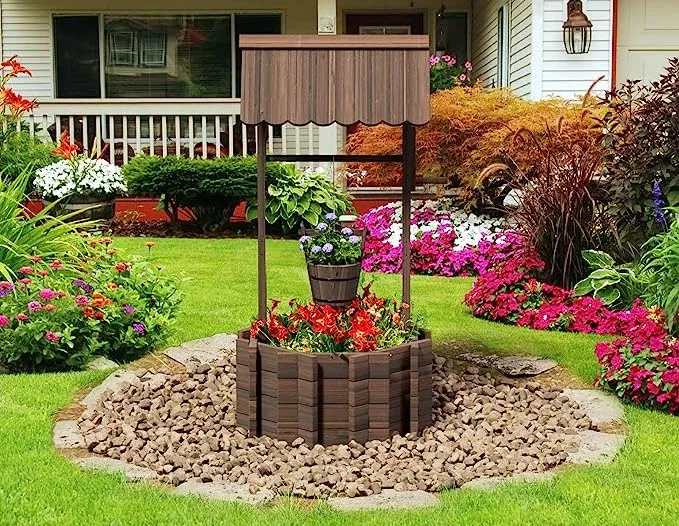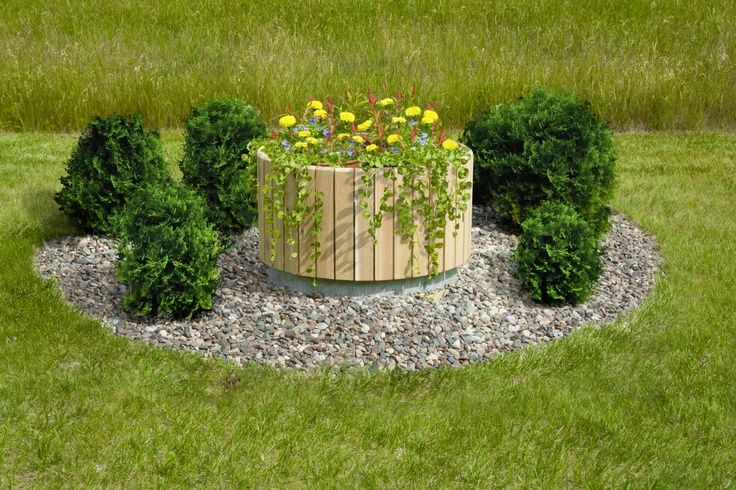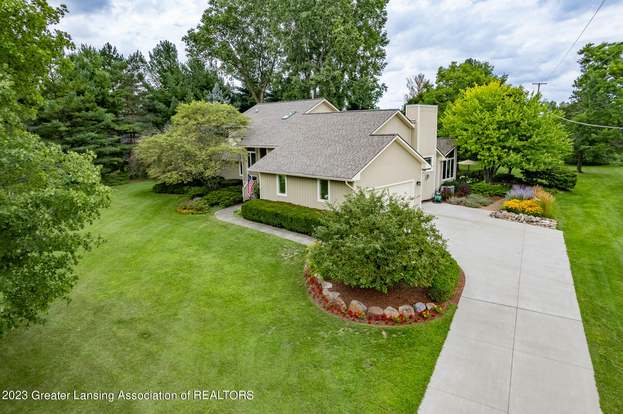When it comes to landscaping, most people tend to overlook the septic tank area in their yard. But did you know that with the right landscaping ideas, you can turn this unsightly area into a beautiful oasis? Your septic tank may be a necessary element of your home’s plumbing system, but that doesn’t mean it has to look utilitarian and unattractive. With some creativity and careful planning, you can enhance the appearance of your septic tank area while also ensuring its functionality. In this article, we will explore some amazing septic tank landscaping ideas to help you transform your yard into a stunning outdoor space.
1. Plantings and Greenery

Plants and greenery are an excellent way to beautify your septic tank area while also providing some practical benefits. When choosing plants for your septic tank area, make sure to opt for ones that have shallow root systems. This is because the roots of larger plants can interfere with the pipes and drainage of your septic tank. Some great options include ornamental grasses, small shrubs, and flowering perennials.
Subheading: Native Plants vs Non-Native Plants
It’s important to consider whether to use native or non-native plants for your septic tank area. Native plants are those that naturally grow in your region and are well-adapted to the climate and soil conditions. These plants are easier to maintain, require less water, and are more resistant to pests and diseases. On the other hand, non-native plants may look exotic and appealing, but they may not survive well in your area and require more maintenance. They can also pose a threat to the local ecosystem if they escape from your yard.
Subheading: Tips for Choosing Plants
Here are some tips to keep in mind when choosing plants for your septic tank area:
- Make sure to choose plants with shallow root systems.
- Consider the amount of sunlight and water your plants will need.
- Choose plants that bloom at different times of the year to ensure year-round beauty.
- Avoid using plants that attract bees or other pests.
- Research the growth habits of the plants you choose and make sure they won’t get too big for the space.
Subheading: Table – Recommended Plants for Septic Tank Landscaping
| Plant Name | Sunlight Requirement | Water Requirement | Bloom Time |
|---|---|---|---|
| Daylilies | Full sun to part shade | Moderate | Summer |
| Fountain Grass | Full sun | Low | Fall |
| Dwarf Alberta Spruce | Full sun to part shade | Moderate | Year-round |
| Coneflower | Full sun to part shade | Moderate | Summer-Fall |
| Catmint | Full sun to part shade | Low | Spring-Summer |
2. Hardscaping Features

In addition to plants, hardscape features can also enhance the appearance of your septic tank area while providing some functional benefits. These features can include pathways, retaining walls, and decorative rocks. When choosing hardscaping elements, make sure to opt for materials that are visually appealing and durable enough to withstand the weight of heavy machinery used for septic tank maintenance.
Subheading: Pathways
A pathway leading up to your septic tank can add a touch of elegance to the area. You can use various materials such as gravel, brick, or flagstone to create a beautiful pathway. Make sure to lay a solid base and allow for proper drainage when installing a pathway.
Subheading: Retaining Walls
If your septic tank area has slopes or uneven terrain, consider installing retaining walls. These walls not only add visual interest but also prevent erosion and water runoff. You can choose from a variety of materials, such as stone, concrete blocks, or wood, to create a retaining wall that complements your landscaping.
Subheading: Decorative Rocks
Decorative rocks can add texture and interest to your septic tank area while also serving as mulch to retain moisture and suppress weed growth. Choose rocks in different sizes and colors to create a unique and visually appealing design. Just make sure not to cover the access points to your septic tank.
3. Using Mulch
Mulching is an essential part of any landscaping project, including septic tank landscaping. Mulch helps to retain moisture, control weeds, and improve soil health. When choosing mulch for your septic tank area, opt for organic materials such as shredded bark, straw, or compost. Avoid using mulch made from recycled rubber or dyed wood chips as they can leach harmful chemicals into the soil.
Subheading: Types of Mulch
Here are some types of mulch commonly used for septic tank landscaping:
- Shredded bark: This type of mulch is made from the bark of trees and is readily available in most garden centers. It works well for suppressing weeds and retaining moisture.
- Straw: Straw mulch is an excellent option for those on a budget as it is inexpensive and serves as a natural weed barrier.
- Compost: If you have a compost pile in your yard, you can use it as mulch for your septic tank area. It will provide added nutrients to the soil and help improve drainage.
Subheading: Benefits of Mulching
There are several benefits of using mulch for your septic tank area:
- Helps to retain moisture in the soil, reducing the need for watering.
- Acts as a natural weed barrier, reducing the need for herbicides.
- Improves soil health by adding nutrients as it decomposes.
- Helps to regulate soil temperature, protecting the roots of your plants.
Subheading: List – Do’s and Don’ts of Mulching
Do’s:
- Choose organic mulch materials.
- Use a 3-4 inch layer of mulch.
- Keep the mulch away from the access points of your septic tank.
- Replenish mulch annually.
Don’ts:
- Use dyed or chemically treated mulch.
- Over-mulch, as this can lead to root rot.
- Pile mulch against the trunks of plants.
- Allow mulch to touch the house foundation.
4. Camouflaging Your Septic Tank

If you don’t want your septic tank to be seen at all, you can camouflage it with various landscaping techniques. This method involves hiding the tank under plants, hardscaping features, or decorative structures.
Subheading: Planting Around the Tank
Planting around your septic tank is an effective way to hide it from view. You can use tall plants such as evergreens or small trees to create a natural screen. Just make sure to leave enough space for maintenance workers to access the tank.
Subheading: Creating a Rock Garden
A rock garden is another popular way to camouflage your septic tank while adding some visual interest to your yard. Use a variety of rocks in different sizes and shapes and plant low-growing shrubs and flowers in between them.
Subheading: Adding Decorative Structures
You can also add decorative structures such as trellises, arbors, or garden statues to hide your septic tank. These structures not only serve as camouflage but also add a unique and personal touch to your landscaping.
Frequently Asked Questions

Subheading: What are the signs of septic tank problems?
The signs of septic tank problems include slow drains, unpleasant odors, lush and green patches in the yard, and sewage backups.
Subheading: How often should a septic tank be pumped?
Typically, septic tanks need to be pumped every 3-5 years. However, the frequency may vary depending on the size of your household and the usage of water.
Subheading: Can I plant a garden over my septic tank?
No, it is not recommended to plant a garden over your septic tank as it can damage the pipes and interfere with maintenance.
Subheading: How far away from my septic tank should I plant?
It’s best to keep plants at least 10 feet away from the access points of your septic tank. This allows for easy access for maintenance and prevents root intrusion.
Subheading: How can I prevent root intrusion into my septic tank?
Choose plants with shallow root systems, avoid planting trees near your septic tank, and regularly inspect and maintain your system to catch any potential issues early on.
Conclusion
Your septic tank area doesn’t have to be an eyesore in your yard. With some creativity, proper planning, and the right landscaping techniques, you can transform this space into a beautiful oasis that complements your home’s exterior. From using plants and hardscaping features to mulching and camouflage, there are plenty of options to choose from when it comes to septic tank landscaping. However, make sure to consider the practical aspects and follow best practices to ensure your septic tank remains functional while also adding beauty to your outdoor space.
